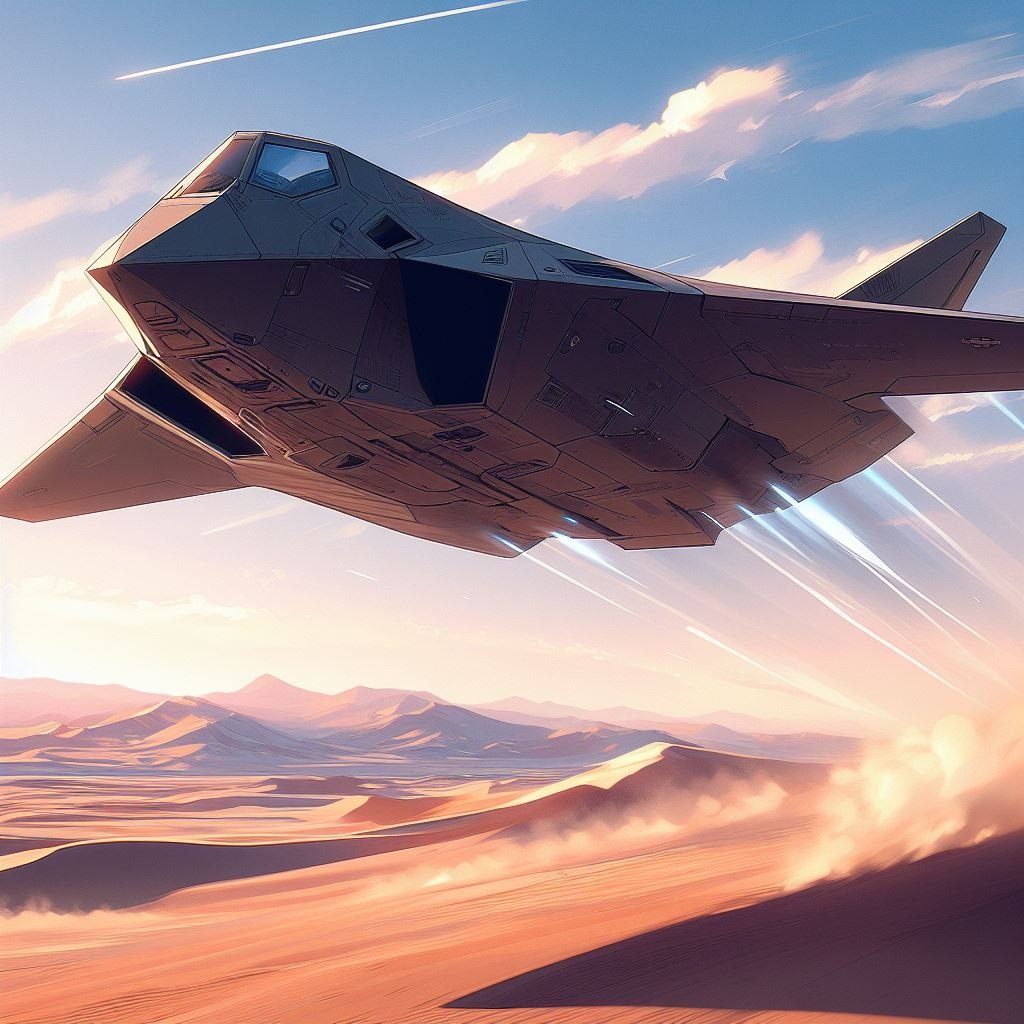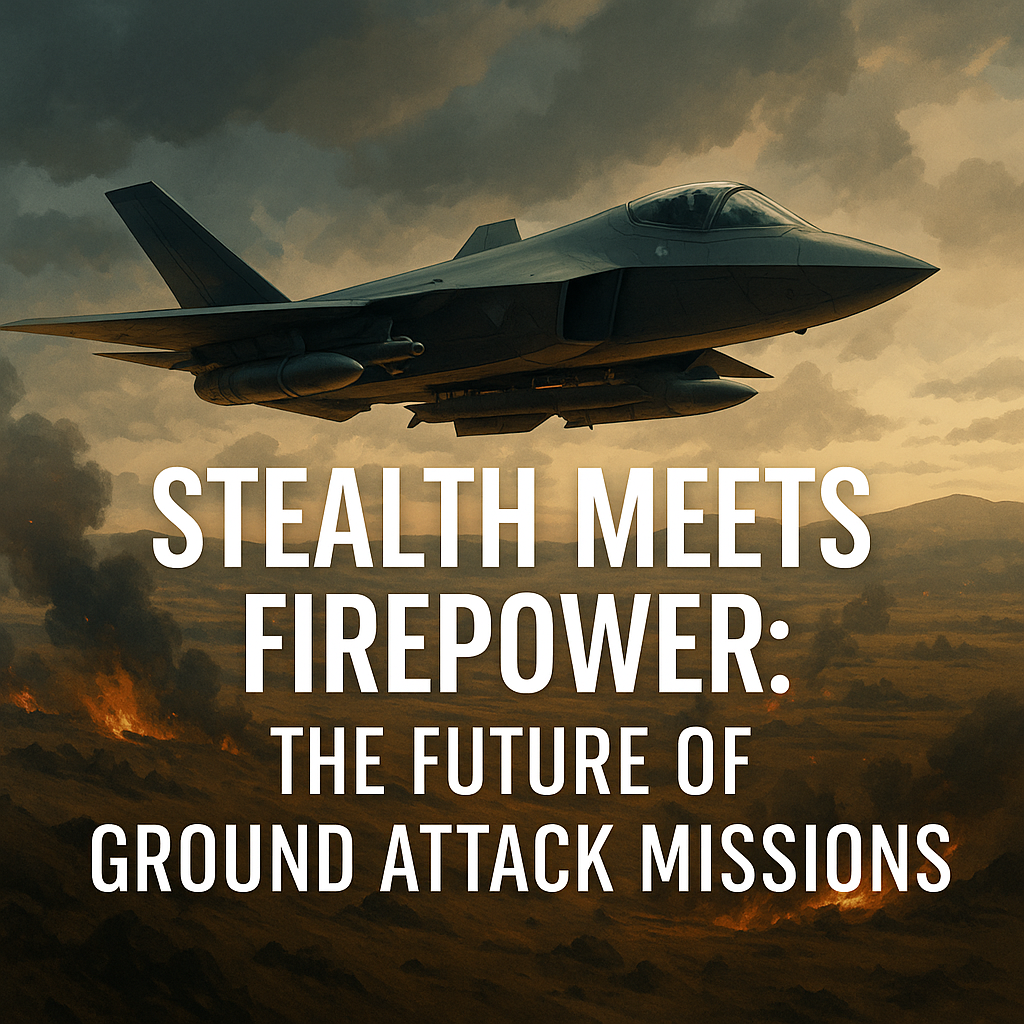
🌟 Introduction: A New Era for Ground Support
Ground attack jets have long played a vital role in supporting troops on the battlefield. These aircraft operate in hostile environments, flying low and slow to deliver accurate firepower where it’s needed most. But as warfare becomes more technologically advanced, so do the threats—and the tools to fight them. In 2025 and beyond, stealth technology, artificial intelligence, and smart munitions are redefining the very essence of close air support (CAS).
🛫 1. From the A-10 to NGAD: A Brief History
- A-10 Thunderbolt II (Warthog): Since its debut in the 1970s, the A-10 has been the gold standard for CAS. Its titanium “bathtub” armor and powerful GAU-8 Avenger cannon make it virtually unmatched in survivability and firepower.
- Cold War to Post-9/11: Aircraft like the Su-25 and Harrier II were key players in Afghanistan, Iraq, and Kosovo, evolving roles to include counter-insurgency.
- Today: New contenders like the F-35 Lightning II are trying to match the A-10’s legacy while meeting stealth and multi-role mission demands.
🔍 2. Defining Ground Attack Jets in the 21st Century
- Mission Profile: Delivering precision strikes on enemy armor, infrastructure, and troops in direct support of ground forces.
- Key Features: Heavy payloads, low-speed maneuverability, reinforced structures, ECM (Electronic Countermeasures), and long loiter times.
- Modern Enhancements: Integration with satellite-guided munitions, laser targeting systems, and digital battlefield networks.
🔬 3. Stealth Technology Comes to CAS
- Fifth Generation Features: Reduced radar cross-section, internal weapons bays, and advanced infrared suppression.
- Material Science: Radar-absorbing paint, non-reflective composites, and heat-resistant polymers for jet exhaust cooling.
- Case Study – F-35: Offers multi-mission capabilities but faces criticism for cost, maintenance, and limited loiter ability.
- 6th Gen Aircraft (NGAD, Tempest, GCAP): Future jets aim to balance stealth, speed, and ground-strike versatility with plug-and-play drone swarms.
🧠 4. AI and Drone Integration
- Loyal Wingmen: Semi-autonomous drones like the XQ-58 Valkyrie fly alongside manned aircraft, extending range and firepower.
- Swarm Tactics: AI-controlled drone swarms can overwhelm defenses, relay real-time targeting info, and execute kamikaze strikes.
- Data Fusion: AI processes sensor data to suggest strike plans, detect threats, and optimize engagement timing.
💥 5. Case Studies in Modern Ground Attack
- Russia-Ukraine Conflict: Su-25s and attack helicopters faced high attrition due to modern SAMs, highlighting the need for stealth.
- US Pacific Strategy: The US Navy and Air Force emphasize stealth for potential conflict in radar-dense Pacific zones.
- Middle East: Israel’s F-35I Adir adapts stealth tech for short-range missions and quick, evasive strikes.
⚖️ 6. The Trade-Offs
- Cost: A-10’s unit cost was ~$20M; F-35 exceeds $80M. Maintenance also skyrockets with stealth coatings.
- Survivability vs. Payload: Stealth reduces external payloads. Solutions include smart bombs and modular internal bays.
- Ethical Concerns: AI-driven weapons spark debates on accountability, especially in urban combat zones.
🌍 7. Global Race to the Sky
- India: Developing AMCA with stealth and CAS flexibility.
- South Korea: KF-21 Block II to include air-to-ground targeting upgrades.
- Europe: GCAP and SCAF programs developing sixth-gen strike capabilities.
- China: J-20 and JH-XX expected to merge stealth and long-range CAS roles.
🧰 8. Future Outlook: 2030 and Beyond
- Hybrid Roles: Jets will combine CAS with command-and-control and EW (Electronic Warfare).
- Human-Machine Teaming: Pilots will manage drone squads while striking ground targets.
- Smart Payloads: Precision-guided micro-munitions and hypersonic missiles enable flexible engagement.
- Zero-Visibility Warfare: Future CAS jets will operate undetected, guided by quantum radar and satellite AI.
🎓 Conclusion
The ground attack jet is not disappearing—it’s transforming. As militaries shift focus from brute force to smart, networked warfare, the battlefield of 2025 will be shaped by jets that are not only lethal but invisible. Stealth and firepower are no longer opposing traits—they’re allies. For nations prioritizing ground support, the challenge lies in integrating the best of both worlds.







